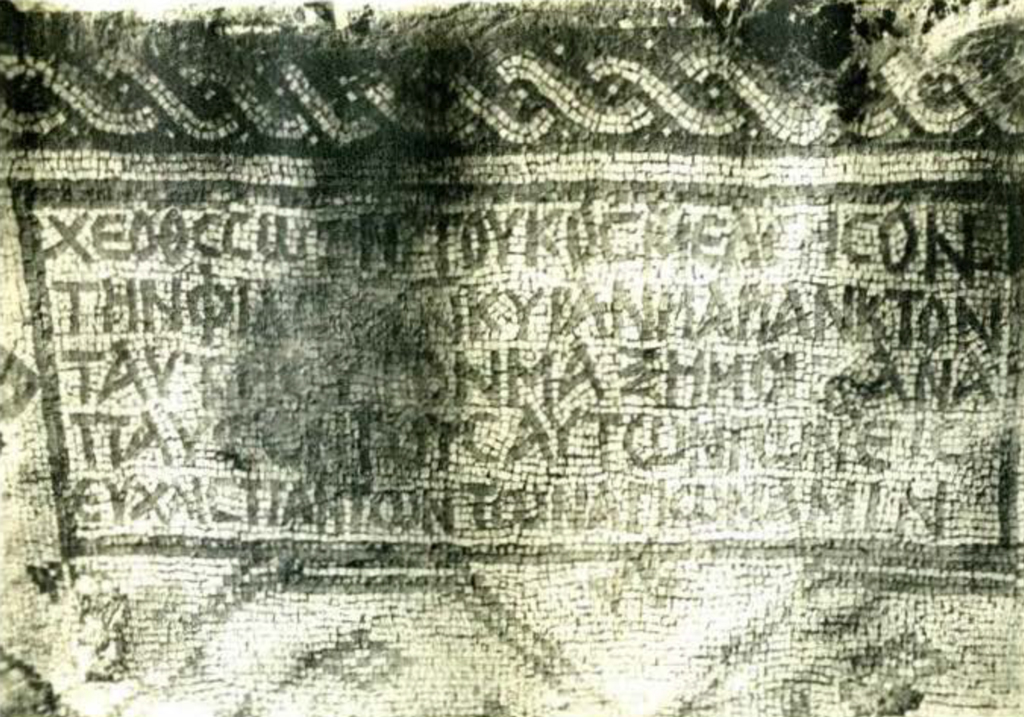WORD has been received from Mr. FitzGerald that the building mentioned in the December Bulletin as being probably a monastery has indeed proved to be one founded by a certain Lady Mary, probably in the latter part of the sixth century A.D. With the extension of the excavations, more of the mosaic floors have been uncovered and it becomes apparent that these are among the finest mosaics ever found in Palestine. They have a great variety of designs and include also no less than seven inscriptions. Notable is the entire floor of the courtyard, in which the central feature is a circular design [Plate IV] consisting of busts representing the Sun and Moon surrounded by full length figures representing the twelve months, each being symbolized by its appropriate occupation: December by a sower, February by a man carrying a hoe, March by a soldier leaning on a shield, and so forth. The name of the month with the number of days in it, is inscribed at the foot of each figure. The remainder of the courtyard is covered with panels of birds and animals and one of a man on a horse in the act of shooting an arrow.

Rooms adjoining the courtyard have conventionalized designs, while the chapel floor has three inscriptions [Plate V] and various designs, notably two large peacocks. An interesting series of figures was found on the floor of a small room to the north of the courtyard. Vine-branches issuing from a vase are turned so as to enclose twelve medallions in which are depicted various scenes, such as a man hunting lions with a spear and shield, men employed cutting grapes, and a negro leading a camel. A large room west of the courtyard was, perhaps, the refectory and contains an inscription recording the completion of the whole mosaic in the time of one George, the Heguman or Superior of the monastery. A number of bronze coins were found in the rooms of the monastery, but the most interesting of the small finds is a lead plaque with a figure of Our Lord on one side and that of the Virgin Mary on the other.
Just north of the monastery runs the wall which, in Byzantine times, enclosed the whole town. At this point, a square tower projects outwards from the wall. Across the River Jalud, excavations have also been resumed at Tell-el-Hosn, the main site at Beisan. Here is in progress the work of clearing the buildings of Rameses II and later rulers which stand high above the level of the Thotmes III temple. So far, a number of rooms of the Rameses II period have been uncovered, and it is hoped that this level, at least on the summit of the Tell, will be completely exposed by the end of this season.


